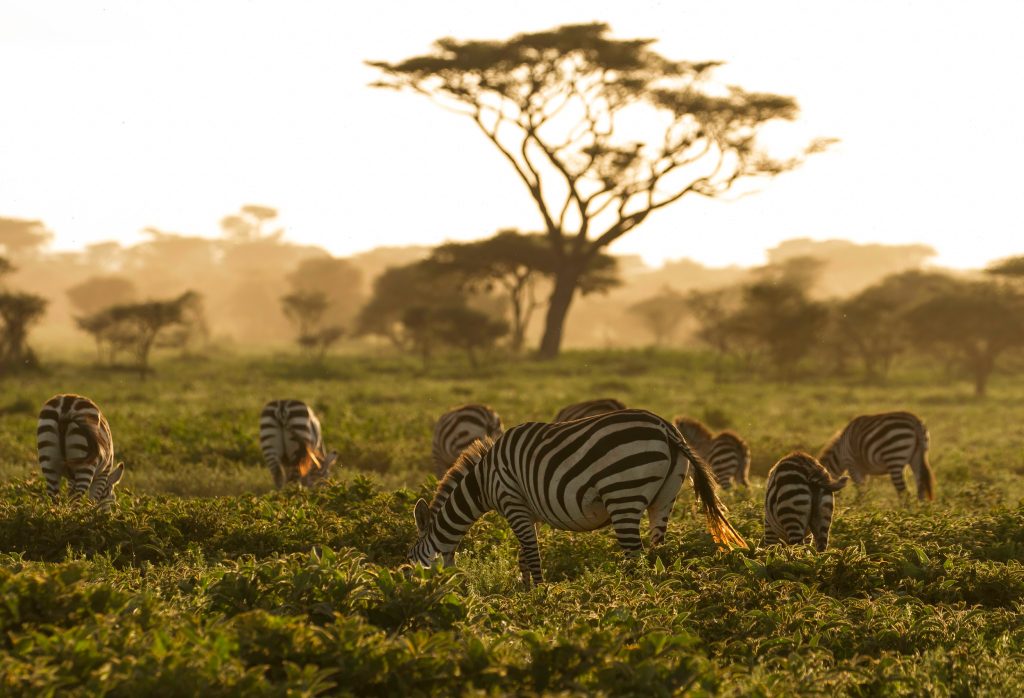
Ruaha National Park, located in central Tanzania, is the country’s largest national park, covering over 20,000 square kilometers. Known as “Tanzania’s best-kept secret,” it offers an unspoiled wilderness with diverse landscapes including rugged hills, open savannah, baobab-dotted plains, and the Great Ruaha River, which attracts incredible wildlife. Ruaha is home to over 570 bird species, one of the largest populations of elephants in East Africa, and a high density of predators including lions, leopards, and wild dogs. The park’s remote location ensures fewer crowds, offering an authentic and exclusive safari experience.
Game Drives
Morning, afternoon, or full-day safaris to spot elephants, big cats, giraffes, antelopes, and rare wild dogs.
Walking Safaris
Guided treks with armed rangers offering an intimate experience with nature, learning about tracks, plants, and smaller wildlife.
Bird Watching
Paradise for bird lovers, especially during the rainy season with migratory species joining resident birds.
River Safaris (Seasonal)
Along the Great Ruaha River, spotting hippos, crocodiles, and wildlife coming to drink.
Cultural Tours
Visits to nearby villages to experience the traditions of local tribes such as the Hehe and Barabaig.
Photography Safaris
Unique landscapes, baobab trees, and predator-rich plains offer spectacular photographic opportunities.
Night Game Drives (at select lodges)
Rare chance to observe nocturnal animals like civets, porcupines, genets, and hunting predators.

Dry Season: June to October
Pleasant temperatures, sunny skies, and little rain.
Best for wildlife viewing — animals gather around rivers and waterholes.
Short Rain Season: November to December
Brief showers, mainly in the afternoons — still good for safari.
Long Rain Season: March to May
Heavy rains; some lodges close due to muddy roads and reduced accessibility.
Fewer tourists and lower prices.
High Season (more tourists): June to October & December to February
Perfect weather and peak wildlife visibility.
Low Season (fewer tourists): March to May
Rainy season — ideal for budget travelers and photographers who love green landscapes.
January to February: In the Southern Serengeti (Ndutu area) —
Thousands of wildebeest give birth.
Excellent time to see predator action (cheetahs, lions, hyenas).
December to April: Southern Serengeti (Ndutu area) — calving season.
May to June: Central Serengeti — herds move north.
July to September: Northern Serengeti & Masai Mara — river crossings at the Grumeti and Mara Rivers.
October to November: Return southward to the Serengeti.
Passport + copies
Travel insurance documents
First-aid kit: antiseptic, painkillers, anti-diarrheal meds, band-aids, motion sickness tablets, mosquito repellent
Prescription medication (in original packaging)
Sun protection: sunscreen (SPF 30+), hat, sunglasses
Camera + extra batteries/memory cards
Binoculars
Reusable water bottle
Small backpack for daily game drives
Lightweight flashlight/headlamp
Universal power adapter
Neutral colors: khaki, beige, olive, brown (avoid bright colors and dark blue/black — attract insects).
Lightweight, breathable long sleeves and trousers for sun and insect protection.
Light jacket or fleece for cool mornings and evenings.
Comfortable closed shoes or hiking boots.
Hat with wide brim.
Swimsuit if your lodge has a pool.
Respect local culture: modest clothing (avoid short shorts or low tops).
Light, casual clothing for warm weather.
A light sweater or jacket for evenings.
Currency: Tanzanian Shilling (TZS).
You can withdraw cash using ATMs in major towns (Arusha, Moshi, Dar es Salaam).
Best banks: CRDB, NBC, NMB.
Use Visa cards — Mastercard may not always work.
Minimize fees:
Withdraw larger amounts at once (max ~400,000–1,000,000 TZS per transaction).
Use ATMs with low international charges (check with your bank).
USD is widely accepted for hotels and park fees — bring clean, post-2009 bills.
Lodges and camps provide full-board or half-board (breakfast, lunch, dinner).
Expect a mix of continental and local dishes:
Rice, beans, ugali (maize porridge), grilled meats, vegetables, tropical fruits.
Vegetarians and special diets are well accommodated (inform your operator in advance).
Bottled or filtered water is always recommended.
Lodges and camps provide full-board or half-board (breakfast, lunch, dinner).
Expect a mix of continental and local dishes:
Rice, beans, ugali (maize porridge), grilled meats, vegetables, tropical fruits.
Vegetarians and special diets are well accommodated (inform your operator in advance).
Bottled or filtered water is always recommended.
Most safari companies and lodges accept:
Bank transfer (SWIFT)
Credit/debit card (Visa/Mastercard; 3–5% surcharge)
Cash in USD (for tips or local payments)
Always confirm the payment method and currency before sending money.
Avoid sending money through unofficial links or unverified accounts.

© 2023 all right with tanzania with keny